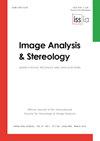改进的卡纳达语手写数字识别模型配置策略
IF 1
4区 计算机科学
Q4 IMAGING SCIENCE & PHOTOGRAPHIC TECHNOLOGY
引用次数: 0
摘要
手写体数字识别一直是模式分类领域的一个重要研究方向。当处理非罗马数字时,这项任务变得更加艰巨。虽然卷积神经网络是图像数据建模的首选,但获得更快收敛和准确结果的技术概念仍然是研究人员的一个谜。在本文中,我们提出了新的方法来初始化和优化传统的卷积神经网络架构,以获得更好的结果对卡纳达数字图像。具体来说,我们提出了两种不同的方法——用于无监督训练和权值初始化的编码器和解码器设置,以及用于选择CNN理想架构配置的粒子群优化策略。与随机初始化相比,无监督的体系结构初始化训练具有更适合任务的权重,有助于更快的收敛,而优化策略有助于减少手动迭代体系结构选择方法所需的时间。所提出的设置是在不同的手写卡纳达数字上进行训练的。提出的方法在两个不同的数据集上进行了评估:一个标准的Dig-MNIST数据集和一个定制的数据集。与传统的CNN训练设置相比,我们提出的系统在多个性能指标上有了显著的改进。结果的改进为依赖这些方法进行更快、更准确的数字分类训练和推理提供了强有力的理由,特别是在没有迁移学习的情况下。本文章由计算机程序翻译,如有差异,请以英文原文为准。
Improved Model Configuration Strategies for Kannada Handwritten Numeral Recognition
Handwritten numeral recognition has been an important area in the domain of pattern classification. The task becomes even more daunting when working with non-Roman numerals. While convolutional neural networks are the preferred choice for modeling the image data, the conception of techniques to obtain faster convergence and accurate results still poses an enigma to the researchers. In this paper, we present new methods for the initialization and the optimization of the traditional convolutional neural network architecture to obtain better results for Kannada numeral images. Specifically, we propose two different methods- an encoderdecoder setup for unsupervised training and weight initialization, and a particle swarm optimization strategy for choosing the ideal architecture configuration of the CNN. Unsupervised initial training of the architecture helps for a faster convergence owing to more task-suited weights as compared to random initialization while the optimization strategy is helpful to reduce the time required for the manual iterative approach of architecture selection. The proposed setup is trained on varying handwritten Kannada numerals. The proposed approaches are evaluated on two different datasets: a standard Dig-MNIST dataset and a custom-built dataset. Significant improvements across multiple performance metrics are observed in our proposed system over the traditional CNN training setup. The improvement in results makes a strong case for relying on such methods for faster and more accurate training and inference of digit classification, especially when working in the absence of transfer learning.
求助全文
通过发布文献求助,成功后即可免费获取论文全文。
去求助
来源期刊

Image Analysis & Stereology
MATERIALS SCIENCE, MULTIDISCIPLINARY-MATHEMATICS, APPLIED
CiteScore
2.00
自引率
0.00%
发文量
7
审稿时长
>12 weeks
期刊介绍:
Image Analysis and Stereology is the official journal of the International Society for Stereology & Image Analysis. It promotes the exchange of scientific, technical, organizational and other information on the quantitative analysis of data having a geometrical structure, including stereology, differential geometry, image analysis, image processing, mathematical morphology, stochastic geometry, statistics, pattern recognition, and related topics. The fields of application are not restricted and range from biomedicine, materials sciences and physics to geology and geography.
 求助内容:
求助内容: 应助结果提醒方式:
应助结果提醒方式:


